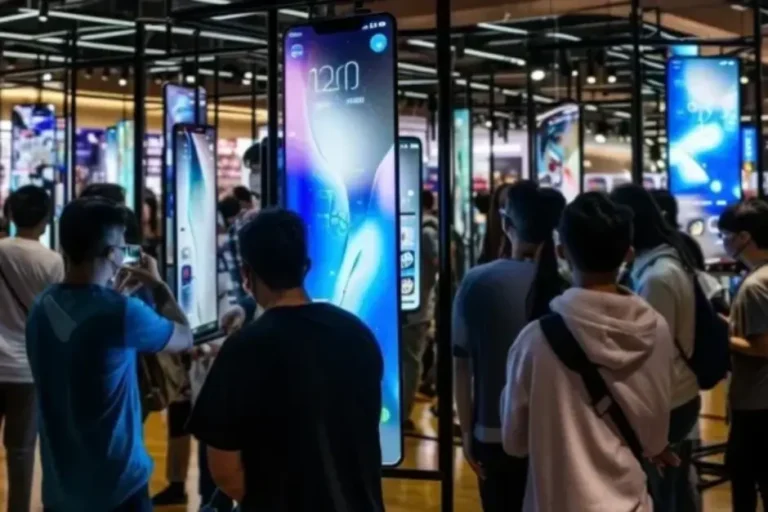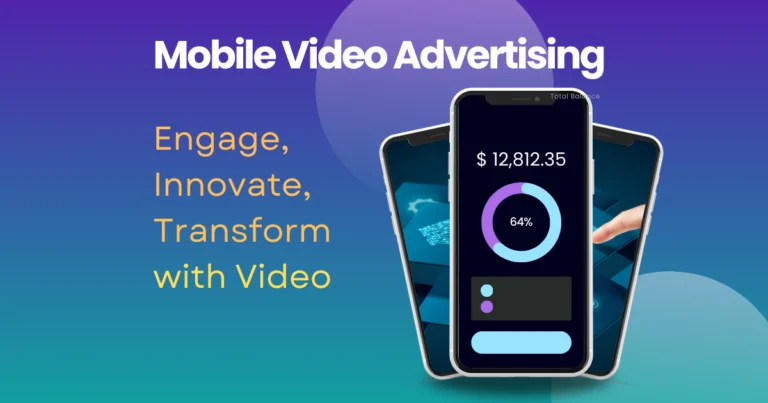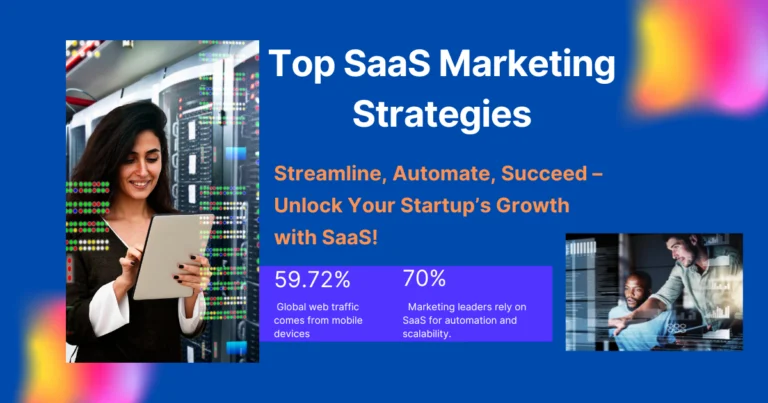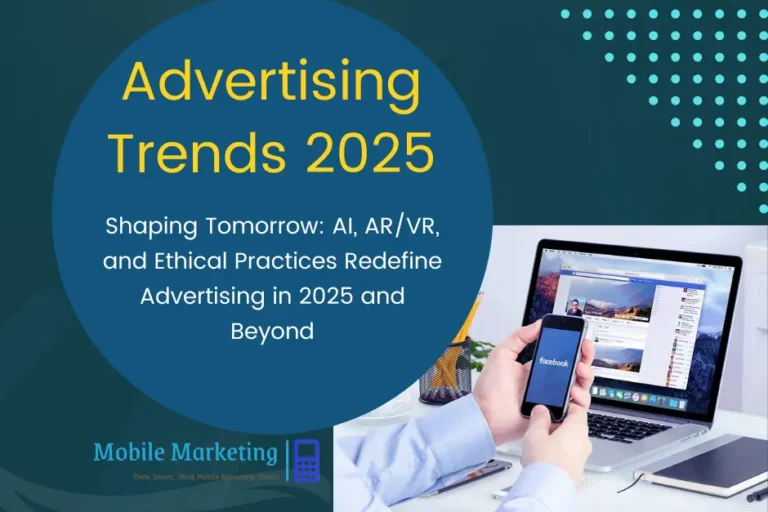Maximize Your Success with Advertising in Mobile Applications: Unlocking Unmatched Engagement

In the dynamic world of digital marketing, Advertising in Mobile Applications has emerged as a key strategy for brands to reach highly engaged users. As mobile app usage continues to soar, businesses are increasingly investing in in-app ads to boost visibility and drive conversions. From rewarded video ads to playable ads, mobile app advertising offers a diverse range of formats designed to capture attention and engage users in meaningful ways. But the question remains: does in-app advertising work? In this article, we will explore the benefits of in-app advertising, popular ad formats, and why it’s a proven tactic for delivering success.
1. The Power of Mobile App Advertising
Mobile app advertising is one of the fastest-growing sectors in digital marketing, with global ad spend reaching billions each year. With the proliferation of mobile devices, app developers and advertisers can access a vast audience. Whether through games, social media apps, or productivity tools, ads in mobile applications are an effective way to engage users where they spend most of their time.
According to recent statistics, mobile apps account for over 90% of total mobile time, and advertisers are capitalizing on this trend by delivering immersive ad experiences that capture users’ attention.
Benefits of In-App Advertising
One of the key benefits of in-app advertising is its ability to provide targeted, relevant ads to users. Unlike traditional web ads, mobile app advertising allows advertisers to take advantage of the rich data available within apps, including user behavior, location, and preferences. This data enables more precise targeting, resulting in higher engagement and better return on investment (ROI).
- Personalized Ad Experiences: Mobile apps can tailor ads based on individual user data, increasing the relevance of the message and improving engagement rates. Personalized ads are known to increase the likelihood of conversion.
- Higher Engagement Rates: Research shows that in-app ads have a 1.5x higher click-through rate compared to traditional mobile web ads. The immersive, full-screen nature of app ads contributes to this success.
- Better Targeting Capabilities: Apps allow for advanced targeting based on user data, improving ad relevance. This leads to higher conversion rates and better ROI.
2. Popular Formats in Mobile App Advertising
Mobile app advertising is versatile, offering different formats to engage users at various touchpoints. Each format has its own unique benefits and is suited to different types of apps and audience preferences.
a. Rewarded Video Ads: Engaging Users with Incentives
Rewarded video ads are one of the most popular and effective ad formats in mobile apps, especially in gaming applications. These ads provide users with the option to watch a video in exchange for a reward, such as in-game currency, extra lives, or access to premium content.
The appeal of rewarded video ads lies in the mutual benefit for both users and advertisers. Users receive something of value, while advertisers gain guaranteed views and higher engagement rates. According to industry studies, 68% of users prefer rewarded video ads over other ad formats because they are given a choice and are actively involved in the experience .
Benefits of Rewarded Video Ads:
- High Engagement: Rewarded ads offer users something in return, making them more likely to engage with the content.
- Improved Brand Recall: Users who willingly engage with a rewarded video are more likely to remember the brand and take positive actions later.
b. Playable Ads: Interactive and Immersive
Playable ads are an interactive ad format that allows users to experience a short preview of an app or game before deciding to download it. This ad format is particularly effective in driving app installs, as it gives users a hands-on experience, making them more likely to commit to the download.
Playable ads are common in mobile games, offering a “try before you buy” approach. By giving users a glimpse of the app’s value, playable ads reduce uncertainty and increase download rates.
Advantages of Playable Ads:
- Hands-On Experience: Users can try out a feature or gameplay element before downloading the app, leading to higher quality installs.
- Engagement: The interactive nature of playable ads keeps users engaged and more likely to follow through with the desired action.
c. Video Ads: Captivating Users with Dynamic Content
Video ads are a powerful tool in mobile app advertising as they combine visual and auditory elements to convey messages more effectively. Video ads are versatile and can be used at various stages of the customer journey, from awareness to conversion.
In-app video ads are often full-screen and non-intrusive, appearing during natural breaks in app usage. This makes them less disruptive than pop-up ads and enhances the user experience.
Advantages of Video Ads:
- Strong Emotional Impact: Video ads can evoke emotions through storytelling, helping brands connect with users on a deeper level.
- Increased Click-Through Rates: Research shows that video ads have a 27% higher click-through rate than static ads .
3. Does In-App Advertising Work?
The question on every advertiser’s mind is: does in-app advertising work? The answer is a resounding yes. In-app advertising has consistently shown to be effective in driving user engagement, increasing brand awareness, and boosting conversions.
a. Higher Engagement Rates Compared to Other Channels
As mentioned earlier, in-app ads have significantly higher engagement rates compared to mobile web ads. With the ability to deliver personalized, full-screen experiences, in-app advertising creates an immersive environment where users are more likely to interact with the ad content.
A recent study revealed that in-app ads can generate up to 2x more engagement than other digital channels .
b. Better ROI and Conversion Rates
In-app advertising is also known for its ability to deliver better ROI. The advanced targeting capabilities, combined with high engagement rates, result in more conversions and, ultimately, a higher return on ad spend. Advertisers can expect to see lower acquisition costs and more qualified leads compared to traditional mobile web ads.
Why In-App Advertising Works:
- Precise Targeting: Apps provide granular data on user behavior, allowing advertisers to create highly targeted campaigns.
- Non-Intrusive: Unlike web ads, in-app ads are often seamlessly integrated into the app experience, leading to a better user experience.
4. The Benefits of In-App Advertising
To summarize the advantages, the benefits of in-app advertising are numerous and compelling for brands looking to maximize their mobile marketing strategies:
- Higher Engagement: Full-screen, interactive ads that hold the user’s attention.
- Personalized Experiences: Tailored ad content based on user data, leading to better ad relevance and response rates.
- Increased Brand Awareness: In-app ads deliver more immersive experiences that enhance brand recall and recognition.
- Better ROI: With advanced targeting and higher engagement, in-app advertising provides a better return on investment.
5. The Future of Advertising in Mobile Applications
The future of Advertising in Mobile Applications is promising, with more brands recognizing the value of in-app ads. As technology continues to evolve, we can expect to see new and innovative ad formats that further enhance user engagement and drive results. Additionally, the integration of AI and machine learning in mobile advertising will allow for even more personalized and optimized ad experiences.
Conclusion
Advertising in Mobile Applications has proven to be an effective way for brands to reach and engage users in a meaningful way. From rewarded video ads to playable ads, the diverse range of ad formats provides endless opportunities for advertisers to capture attention and drive conversions. With higher engagement rates, better targeting capabilities, and measurable ROI, mobile app advertising continues to be a cornerstone of digital marketing success.
As mobile usage continues to grow, brands that invest in mobile app advertising will be better positioned to connect with their audience and achieve their marketing goals.
FAQ
What is mobile app advertising?
Mobile app advertising is the practice of promoting mobile applications through various advertising channels, such as in-app ads, banner ads, interstitial ads, and video ads, to reach and engage users on their mobile devices.
How do you put ads in your mobile app?
Integrate an ad network SDK.
What is mobile advertising with an example?
Mobile advertising is the promotion of products or services through mobile devices such as smartphones and tablets. An example of mobile advertising is in-app advertisements, where ads are displayed within mobile applications.
Why is in-app advertising important?
In-app advertising is important because it allows mobile app developers to generate revenue from their apps. It provides a way for them to monetize their apps and offset the costs of development and maintenance.







One Comment
Comments are closed.